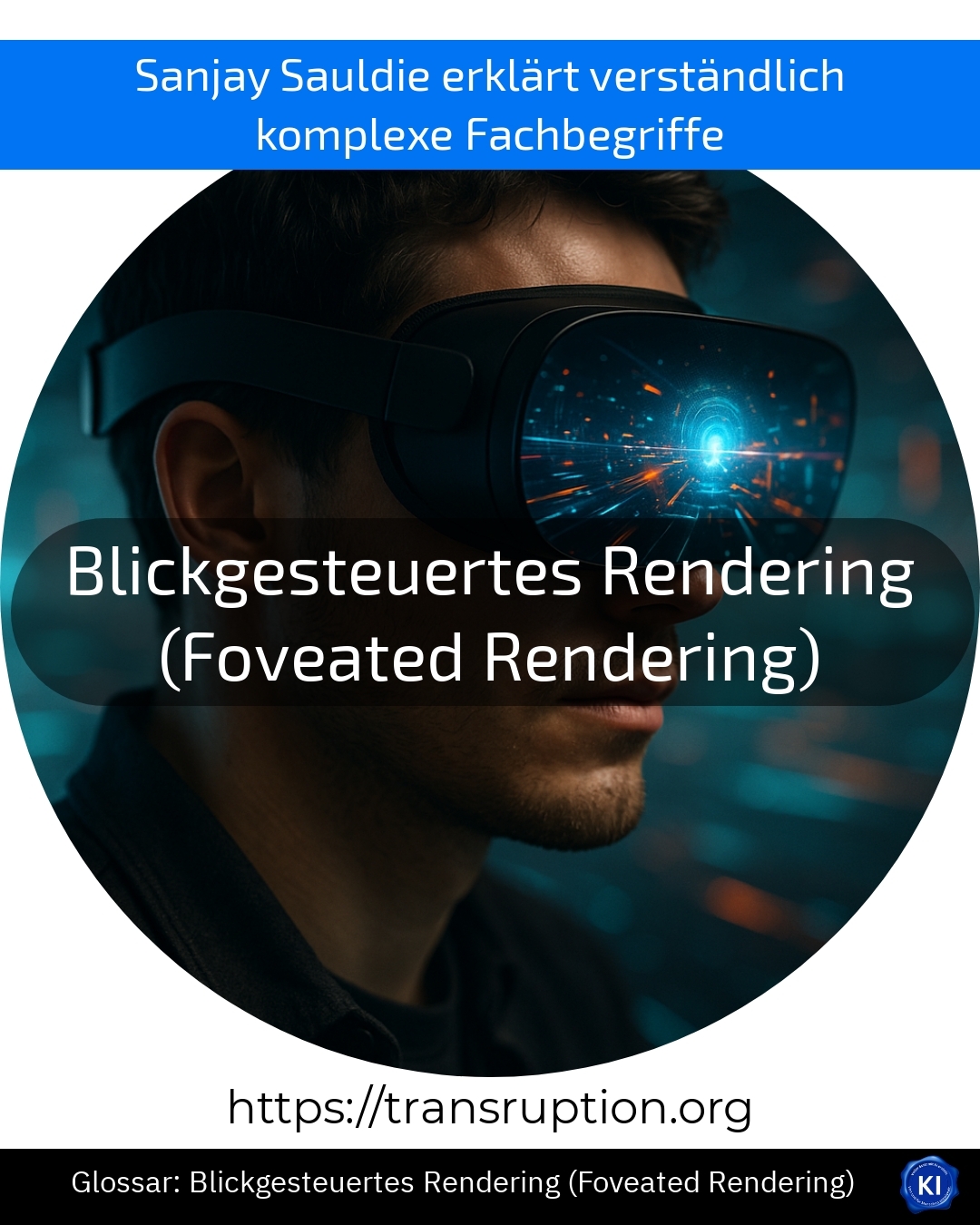Foveated rendering is particularly at home in the fields of virtual and augmented reality, artificial intelligence and digital transformation. This technology is used to display virtual worlds in VR glasses or augmented reality applications particularly efficiently.
Gaze-controlled rendering calculates exactly where the user is looking. Only this area is rendered in the highest level of detail, i.e. graphically processed. The surroundings at the edges, on the other hand, are shown with less detail because the human eye sees less clearly there anyway. This saves an enormous amount of computing power and energy without any visible loss of quality for the user.
An illustrative example: Imagine you are wearing VR glasses and playing a car racing game. Your gaze is always focussed on the road in front of you. Only this area is displayed perfectly and in great detail, while the sky or the grandstand at the edge remains blurred. This makes the game run much more smoothly and puts less strain on the graphics card.
Gaze-controlled rendering (foveated rendering) is therefore an important component in making virtual worlds more realistic and more cost-effective to experience.















